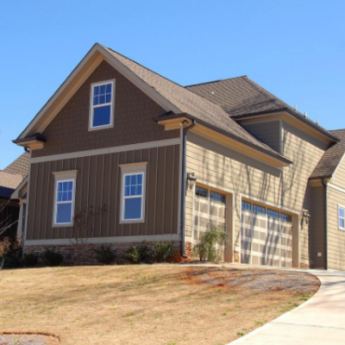Blinds Vs Shades: An In-Depth Comparison For The Design-Conscious Homeowner

For the design-conscious homeowner, the debate between blinds and shades is more than just a matter of functionality. It delves into the aesthetics, insulation properties, light control, and overall ambience of a room. Both blinds and shades have unique qualities that can complement different interior styles.
Here, we will explore the ins and outs of both options, assisting you in making the best choice for your home.
1. Definition And Basics
- Blinds:
Blinds consist of vertical or horizontal slats that can be tilted, raised, or lowered to control light and visibility. They are typically made of materials like wood, faux wood, metal, or plastic.
- Shades:
Unlike blinds, shades are made of a continuous piece of fabric or material that rolls or folds up to let in light. They come in various styles like roller, Roman, cellular, and more.
2. Aesthetics And Design
- Blinds:
Blinds offer a structured and clean look. With options like wooden blinds or metallic mini-blinds, they can be both modern and traditional. The rigid lines of blinds can add a level of sophistication and crispness to a room.
- Shades:
Shades offer a softer aesthetic. The continuous material provides a smoother appearance, making them perfect for settings where a more relaxed or elegant ambience is desired. Roman shades, for instance, give a draped look, adding a touch of luxury to interiors.
3. Light Control And Privacy
- Blinds:
The adjustable slats of blinds give homeowners precise control over light and privacy. By tilting the slats, one can easily manage the amount of light entering a room without fully obstructing the view.
- Shades:
While shades can’t be tilted like blinds, certain types, like cellular or honeycomb shades, offer diffused light, illuminating rooms gently. For complete blackout options or sheer light filtration, different shade fabrics are available. However, they typically operate on an all-or-nothing principle – they’re either fully open or closed.
4. Insulation And Energy Efficiency
- Blinds:
Blinds, especially the ones made of wood or faux wood, offer some degree of insulation. However, their slatted design can allow drafts to come through, making them less energy-efficient than certain types of shades.
- Shades:
Shades, particularly cellular shades, are known for their insulating properties. The unique honeycomb structure traps air, acting as a barrier against cold drafts in the winter and the sun’s heat in the summer. This can lead to potential savings on energy bills.
5. Maintenance And Durability
- Blinds:
Blinds can be more durable, especially those made from materials like wood or aluminium. Cleaning is relatively straightforward; a simple wipe-down or dusting is often sufficient. However, they can be prone to bending or breaking if mishandled.
- Shades:
Shades, depending on the material, can be slightly more challenging to clean, requiring gentle vacuuming or spot cleaning. Over time, the fabric or material may fade or wear out, especially if frequently exposed to sunlight.
6. Customisation And Brands
Many companies specialise in bespoke window treatment solutions. One notable mention is Yewdale commercial blinds, which offer a range of customisation options for homeowners seeking unique designs.
Whether it’s a specific colour, pattern, or material, both blinds and shades can be tailored to a homeowner’s preferences, allowing for a harmonious integration into any interior design.
Conclusion
For the design-conscious homeowner, the choice between blinds and shades boils down to personal preference, the desired aesthetic, and functional requirements. While blinds offer crispness, adjustability, and durability, shades shine in the arenas of soft aesthetics, insulation, and a broad array of design potentials.
Assess your needs, consider the ambience you want to create and choose accordingly. Either way, with the right selection, your home will radiate style and comfort.
Read Also:











Leave A Reply